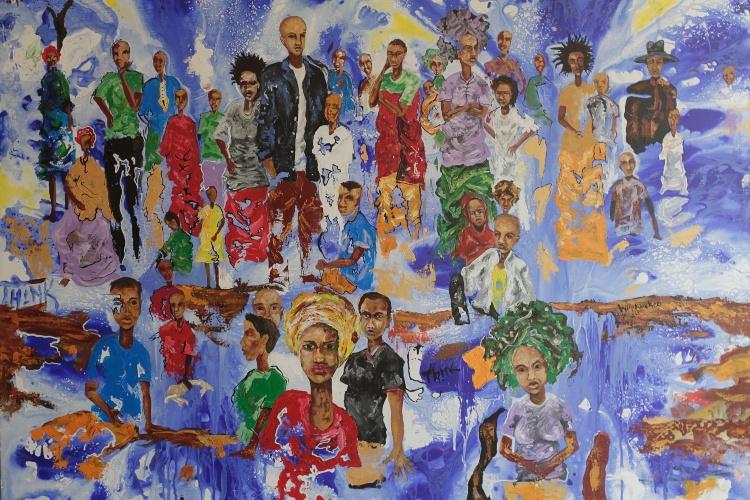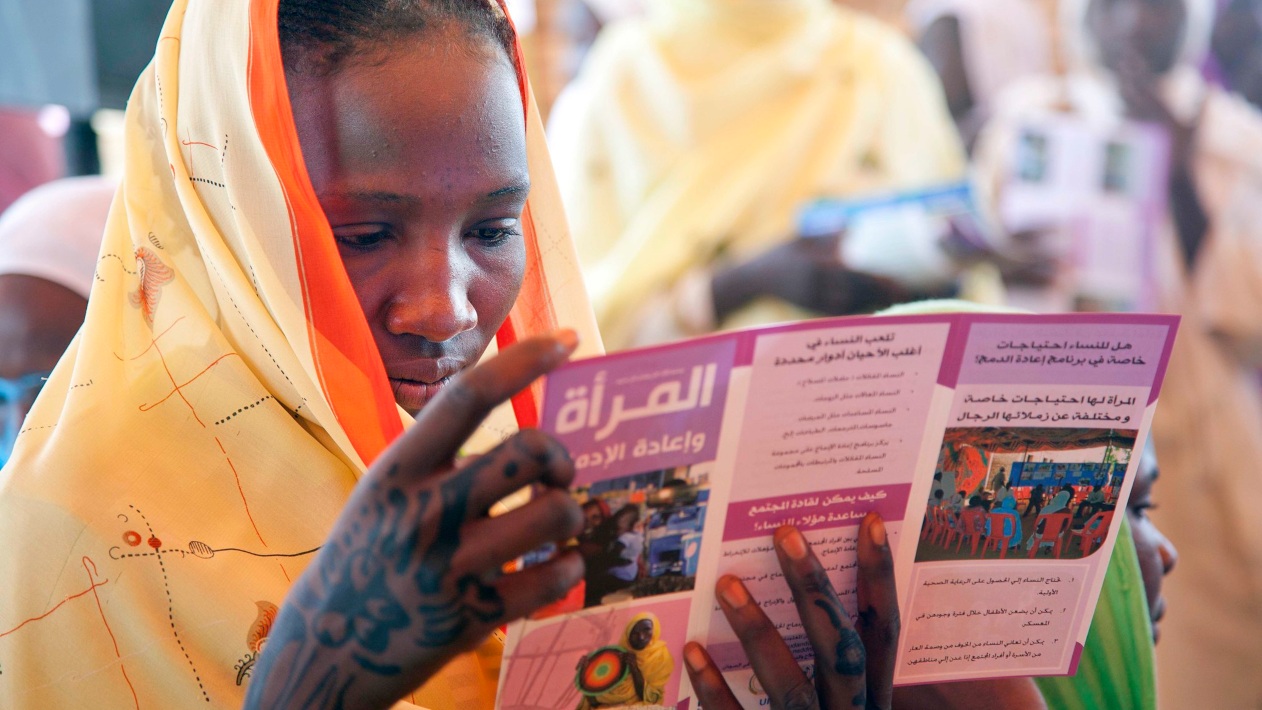Research into the dynamics of return and reintegration of refugees in Uganda identified a gap in knowledge and worked with artists to explore new ways to present the findings to a wider audience. Oxfam and LSE’s Duncan Green talked to researchers Anna Macdonald and Kara Blackmore to find out more.
This post is part of a series on public authority evaluating the real-world impact of research at the LSE Centre for Public Authority and International Development. Visit the LSE research project The Politics of Return website to learn about the artwork.
First, the knowledge gap: there is huge academic and aid sector interest in what drives people to flee their homes, to become refugees (abroad) or displaced people (in their own countries), and how they survive (or don’t) in refugee camps and host communities. But what happens when displaced persons (including former combatants) go back home? Most attention to that issue centres on the humanitarian/legalistic aspects of repatriation and reintegration, and often only deals with the immediate weeks and months of return. Policymakers, meanwhile, tend to equate sustainable returns with socio-economic development and major policy paradigms such as DDR (Disarmament, demobilisation and reintegration) and transitional justice.
Based on research at the LSE project The Politics of Return, what Macdonald, Blackmore and their fellow CPAID researchers found is that:
‘Return is not straightforward. The Politics of Return research investigated return to show that displacement can be cyclical, that systems for reintegration can be politically aligned, or socially stigmatising. One-off programmes may have immediate impacts for people returning from displacement, but long-term support is rare and build their own re-integration networks with varying degrees of success, but long-term support for women and children conceived during the war is scarce.’
Their findings also don’t fit with simplistic outsider assumptions about re-integration and reconciliation after violent conflict.
‘The research found that in Uganda, for example, if you were a former combatant who had committed atrocities, if you were economically productive and respectful and well-behaved back home, people may well accept you back. There are strong norms on what it is to be a proper, trustworthy person, which can help sweep the slate clean. On other hand, if you are a woman who was abducted by the rebel group and has now returned from the Bush, perhaps with children, in the eyes of the international community, you might be regarded as a traumatized victim and indeed that may be the case, but across communities where we conducted our research, you may be perceived to pose a real threat, possessed by spirits, for example, in a way that is seen as contagious. So in terms of social reintegration often it is not so much what you did during the conflict, as how you behave in the present.’
Macdonald and Blackmore argue that the reality of complex returns poses a serious challenge to conventional ideas of ‘transitional justice’ and ‘DDR’ and indeed to broad operational categories such as ‘return’, ‘repatriation’, ‘demobilisation and ‘reintegration’. In Eastern DRC, for example, Politics of Return researchers found that young men move fluidly between civilian and combatant roles and neither of these categories are particularly well suited to describing returnee realities in a context where being a fighter is a response to joblessness and economic insecurity.
Even more interesting is what the Politics of Return team did with their findings; they set up a series of artistic collaborations with illustrators and conceptual artists. Cartoonists worked to illustrate particular research papers and their work was displayed at conferences in South Africa, Uganda and at the LSE’s Africa Summit in London. Fictional characters featured in the cartoons, created from the findings, telling ‘stylized stories’ to go with the different social issues of return in Uganda, South Sudan, the Central African Republic and the Democratic Republic of the Congo.
A more research-embedded collaboration invited three artists from the region to spend three months undertaking their own avenues of enquiry in response to the research themes. Bathsheba Okwenje, Willy Karekezi and Maski Gael all created a series of artworks that were displayed in workshops at the Uganda Museum in Kampala during the biennial KLA ART festival. At the end of the project, the cartoon and conceptual collection of paintings, collage and installation were displayed during a conference in Gulu, northern Uganda.

These meetings generated a unique form of research alchemy, where scholars and co-creators of knowledge converged with real-world impact. At the teabreak in Gulu, the mother of one of the artists, a well-connected former senior staffer at UNDP, got talking to a woman who had participated in the research; she had set up an orphanage for the children of former abductees born in captivity. This meeting spurred a relationship from which her organisation, War Victims and Children’s Networking (WVCN), was put in touch with a range of agencies including the NGOs Urgent Action Fund and CARITAS and the United Nations Development Programme to provide support during the COVID-19 pandemic. Additionally, the UN Women project Second Chance Education registered 250 children with WVCN to enter education and vocational training.
The process of exhibition-making itself catalysed a range of interactions. Women returnees who had been involved in creating the art works were invited to join the installation. They were impressed at seeing their photos in an art gallery setting. But they still asked those practical and pressing questions – one minor example: ‘how can you help us with school fees? On the theme of the work related to courtship and love, a few women asked: Can our husbands come and see it?’
Working with artists from East Africa who were influenced or impacted by displacement meant that they were able to create unique and socially engaged projects. Yet art about trauma and violence can still be extractive – fly-in fly-out creators snap photographs for coffee table books or for printing and framing in Euro-American galleries. The Politics of Return was different. People involved in the research could access it – even via refusal, ‘I don’t want my photo in this’ – and the artists were picked up by local media (including two national newspapers in Uganda) and organisations (both local and international). Their work illustrated local and global relevance, setting off a domino effect of conversations around the region.
One thing doesn’t change though – the importance of relationships. The CPAID researchers had years of working on the issue in East and Central Africa and were able to combine their networks with those of the artists to trigger a dense and productive conversation on the politics of return, which will continue long after the lifecycle of the project.
Learn about the research in a special themed issue of the Journal of Refugee Studies funded by the Centre for Public Authority and International Development.





